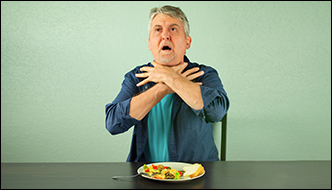
If you encounter someone who is choking, it's important to act quickly and effectively to help clear their airway. Here are the steps to assist a person who is choking:
- Assess the severity of the choking: Determine if the person is experiencing partial or complete airway obstruction. Signs of mild choking include coughing forcefully, while severe choking may be indicated by the inability to speak, breathe, or cough forcefully. If the person cannot breathe or is turning blue, it is a medical emergency, and immediate action is required.
- Encourage coughing: If the person is conscious and able to cough, encourage them to continue coughing to try and dislodge the object obstructing their airway. Coughing is the body's natural response to clear the blockage.
- Perform abdominal thrusts (Heimlich maneuver): If the person is unable to cough, speak, or breathe, you will need to administer the Heimlich maneuver. Follow these steps:
-
- Stand behind the person and place your arms around their waist.
- Make a fist with one hand and place the thumb side against the person's upper abdomen, just above the navel.
- Grasp your fist with the other hand and deliver firm upward thrusts into the abdomen, aiming to dislodge the object.
- Perform quick, inward and upward thrusts, using your body weight if necessary. Repeat the thrusts until the object is expelled or the person becomes unconscious.
- Call for emergency assistance: If the person is still choking after performing abdominal thrusts, immediately call emergency services or ask someone nearby to do so. Describe the situation and inform them that the person is choking and requires immediate medical assistance.
- Perform CPR if necessary: If the person becomes unconscious and is not breathing, lower them gently to the ground and begin cardiopulmonary resuscitation (CPR). Follow the instructions provided by the emergency operator until help arrives.
It's important to note that these instructions are intended as a general guideline. If you are not trained in first aid or CPR, it is advisable to seek immediate medical help and let professionals handle the situation.
Consider taking a certified first aid and CPR course to acquire the necessary skills and knowledge to respond effectively in emergency situations. Proper training can equip you with the confidence and abilities to help save lives.
